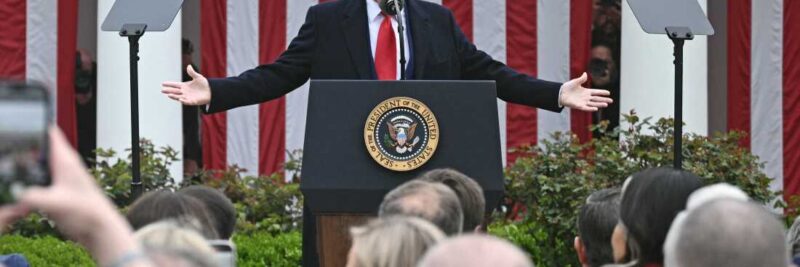Trump Makes Statement About Tariffs
President Donald Trump is casting a bold new chapter in America’s trade history—one that promises to reset the global economic order and bring manufacturing back to American soil. In his latest proclamation, delivered from the Rose Garden and echoed across social media, Trump declared April 2, 2025, as “Liberation Day,” a turning point in the battle for American economic sovereignty.
At the core of this new era is a sweeping tariff policy aimed at correcting what the president described as decades of trade imbalances. His plan: impose a set of reciprocal levies—starting with a 10% baseline and scaling up to over 40% in some cases—on countries that export significantly more to the U.S. than they import.
The tariff formula is simple, direct, and unapologetically aggressive: take a country’s trade surplus with the United States, divide it by its exports to the U.S., then halve the result to set the new rate.
As dramatic as the policy is, the response has been just as swift. Commerce Secretary Howard Lutnick and other top cabinet officials confirmed that more than 50 countries have already reached out to negotiate, from allies in Europe to strategic partners in Asia. But Lutnick made clear: the tariffs are not being delayed. “There is no postponing,” he said. “The tariffs are coming. Of course they are.”
The economic impact was immediate. Following Trump’s announcement, the stock market suffered its steepest drop since the pandemic, raising alarm among economists and investors alike. Yet inside the administration, officials framed this as a necessary sacrifice to achieve long-term national resilience. Trump himself acknowledged the pain, urging Americans to “HANG TOUGH” as the economic gears begin to shift. “It won’t be easy,” he said, “but the end result will be historic.”
Internationally, reactions have been mixed. Israel and Vietnam responded early, with Israel lifting all tariffs on U.S. goods and Vietnam offering to reduce duties on cars and liquified natural gas. But Vietnam also pushed back—hard—requesting a delay in the nearly 46% tariff that would hit its exports. As the sixth-largest exporter to the United States, the stakes for Hanoi are high, but so far, the U.S. has stood firm.
Trump and his team argue that this is the only path forward. After decades of allowing trade rules to erode domestic industry, the administration sees tariffs as the hammer needed to forge a new economic reality. Agriculture Secretary Brooke Rollins and economic adviser Kevin Hassett both defended the policy, pointing to multitrillion-dollar investments flowing back into the country and the potential to revive sectors long left behind.
“This is an economic revolution,” Trump said. “We are going to produce the cars, ships, chips, airplanes, minerals, and medicines we need right here in America.”
And the message from his administration is crystal clear: the era of one-sided trade is over. The president’s strategy is not merely about revenue or retaliation—it’s about leverage, rebuilding, and laying claim to an industrial future where America is no longer the “whipping post” but the center of gravity.


